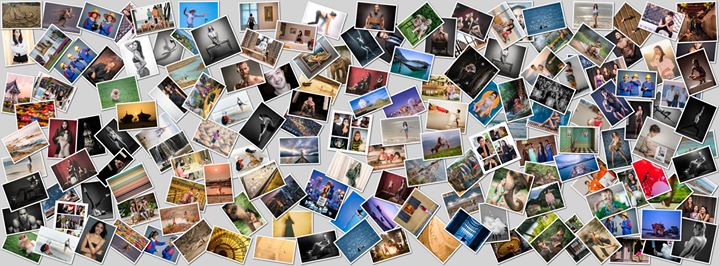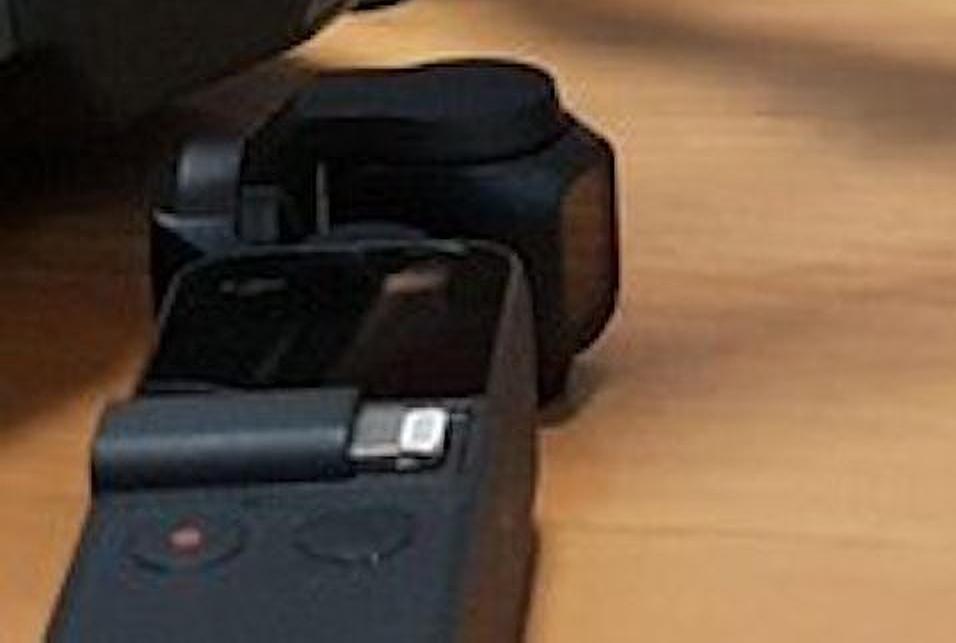-
Posts
779 -
Joined
-
Last visited
Content Type
Profiles
Forums
Articles
Everything posted by Robert Collins
-
Well the maths sort of works like this. 1.5x crop = 1.5 x 1.5x = 2.25x 20mp / 2.25 = 8.9mp which about equals 4k (1:1) ...So 4x bigger sensor is nice but if you throw away half the sensor in video either through 'pixel binning' or 'cropping' it is an improvement but it aint great.....
-
Are you sure 4k FOV is 'pixel binned' as opposed to 'downrezzed'? Not questioning whether you are right or wrong - I simply dont know. It doesnt make a lot of sense in video terms to produce a 1 inch 20mp sensor and then 'pixel bin' half the pixels for video. But this maybe a choice that DJI have made... (I mean now you are effectively telling me that there is no full sensor read out for video at all - you have a choice between 'pixel binning' or 'cropping'. Not the end of the world but we are getting to the stage that we dont really have a true 1" sensor for video in the first place.)
-
This figure when take in isolation is very misleading. FF cameras only make up between 15-20% of ILC sales (in volume) but full frame lenses make up over 50% of lens sales by value and around 30% by volume... http://www.cipa.jp/stats/documents/e/s-201712_e.pdf And actually if you look at the BCN numbers you will see that a 2 lens kit for the average consumer consist of of 2 x zooms (apsc) 16-55 and 55-150.
-
It is quite possible that a proprietary mount may work out well for Nikon mirrorless. It may also end up as an epitaph on their gravestone - 'the company that thought that a proprietary lens mount was a good idea in 2018!!' Obviously it is not a great decision for consumers (but you could equally claim that why should Nikon care?) Of course Sony started with a few premium lenses not a problem. I happen to like the 'premium Batis line of lenses' others like the cheaper(er) Samyang E mount af lenses or the new Tamron 28-75 2.8. But a closed lens system for a new mount shouldnt be attractive to consumers. Of course, the Z mount could be easy to reverse engineer but in that case why not license it. If it isnt easy to reverse engineer why invest in the mount in the first place? And seriously, it is total bollocks to camera manufacturers sell new cameras at a loss. Mirrorless cameras are pretty inexpensive to produce which is why Olympus has maintained a gross margin over 45% in the last 10 years and Sony can still sell a Sony A7 for US$799.
-
Sure but they arent even in the top 3 ILC lens manufacturers in the world and ILC lenses are a shrinking market... Horrible decision.
-
I agree with you. My feeling is that Nikon has very deliberately placed 'high end' mirrorless 'below' 'pro dslr' partly as a dig at Sony. Sort of along the lines that these 'mirrorless' are great travel companions and great gadgets with tons to tech but at the end of the day 'REAL pros use pro DSLRs which are the best tools for the job.' Sort of along the lines that when Tony says 'I couldnt recommend this camera (with one card slot) for pro wedding shooters' Nikon would reply 'neither would we'
-
I am really talking about how these cameras are being marketed - the whole 'pro' thing is marketing bullshit for the most part anyways. I absolutely love the 55 1.8 Sony lens and the size is much more appropriate for mirrorless (and with modern sensors you dont need the extra speed.) The 50 1.4 is the pro lens though. I could go on... These lenses are called the S Line. The pro dslr line is called the 'G' line (for gold) presumably the 'S' is for silver... The Nikon ambassadors they wheeled out didnt exactly look like their heavyweights - both young, one 'female' travel photog (ideal for mirrorless), one young male (timelapse/hyperlapse specialist) ideal to point out A7x3 dont even offer timelapse in camera....
-
Its possible - Bloom aint a particularly technical guy. But personally I think he is right. Why? Because if you read the specs in the manual you will see there are 2 4k modes. 4k FOV (presumably standing for 'field of view' meaning 'whole sensor') and (reported 5.7k downrezzed to 4k}. 4k HQ (And I can only assume the HQ stands for 'High Quality' and as its crop makes it 1:1 which implies less detail - I would pretty much bet that the HQ = 10 bit v 8bit) Anyway that's my theory until someone says differently. It is also somewhat supported by the fact that 2.7k 60 and 1080 120 are heavily cropped from what I gather (which implies limitations on the processor.) On a more positive note... this is very impressive....
-
It is an interesting review and they usually do a good job (although some of their experience seems to contradict DPR who usually do a good job too.) There is one thing, however, that I think they got 'very wrong'. At the beginning of the video they say that Nikon marketed the camera as a 'mirrorless D850'. I dont think they did (well apart from the price.) I think Nikon very deliberately marketed the camera a 'step below' the D850 pro camera. Why do I say that? Well look at these very deliberate choices that Nikon made... 1 card slot (not really pro) Small battery (not really pro) Choice of lenses to be released with the body 24-70 f4 50 1.8 35 1.8 ...again not really pro.... And I suspect that Nikon knew that with the first iteration of their mirrorless, the performance of DSLR lenses with an adapter would be good but not great, af particularly lowlight c-af would be good but not great and that their ibis would be good but not great. And look virtually noone needs 2 card slots. If you are a professional wedding photographer who needs redundancy, you probably should not be shooting a wedding with a camera with 3 native lenses. And a small battery? Batteries take less than 10 seconds to change out. Nikon certainly exceeded my expectations (especially with the Z6) less so with the lenses and by quite a wide margin. But if you start with unrealistic expectations it isnt really surprising if you end up feeling disappointed.
-
I do think that there are quite a few 'gotchas' in these specs which few people are talking about. Probably most important - in Phillip Bloom's video, he states that 4k FOV (5.7k downrezzed to 4k using the whole sensor) records in 8 bit rather than 10 bit. You can get 4k 10 bit but only in 4k HQ mode (which is essentially a 1.5x crop using half the sensor.) Now its possible that Bloom was using preproduction firmware and this might change but I doubt it (I have looked in the instruction manual but there is no mention.) This would be bad news. Either you use the full sensor and get 8 bit 4k or half the sensor (and lose a stop) and get 10 bit 4k. This isnt a dealbreaker for me but I suspect it might be for others.
-
It does offer a lossless 1.5 crop mode in 4k though. Less so with the 'Pro' becaujse it has a variable aperture lens. The 'zoom' is fixed aperture. Over at Mavicpilots.com, quite a few people are already saying their Mavic 2 has shipped.
-
Yes. Me too. In fact they told me I was the first person to order in Bangkok which is rather embarrassingly over enthusiastic. They have no idea when they will get stock....
-
This is an excellent review. APAS and Activetrack 2.0 are pretty insane. Hyperlapse mode can shoot RAW Most of the Mavic Pro 2 footage I have seen looks oversharpened but I suspect most reviewers are shooting at default settings.
-
I think there were two near future products that were left out of the presentation. 1) A small gimbal to attach the camera unit. We have already seen a photo (although not a very good one.) 2) A Mavic 2 controller with a built in 5.5 inch crystalsky monitor - needed because smartphone screens arent bright enough in bright sunlight. Overall I think DJI is innovating fast enough that they maybe a major player in the hybrid mirrorless market within 5 years.
-
Thermals are definitely an issue with a drone. The batteries run down pretty fast on top of the original Mavic and get pretty hot. The original Mavic had a large metal heatsink on the bottom which would also get hot (almost too hot too touch.) This heatsink has been removed from the Mavic 2 (by the looks of it) to make room for additional sensors. So the lack of 4k/60 might be thermal related or it might simply be tied to product segmentation.
-
Although I think it is a difficult concept to get my head around, I really do think the Mavic Pro 2 is rather better than sliced bread....
-

Wishes for 10 years on from the birth of mirrorless
Robert Collins replied to sanveer's topic in Cameras
I understand your point here (and I mostly buy a camera for its stills capability - because I shoot stills mostly.) But I feel it is at the heart of our disagreement. I mean think back a couple of years when the GH4 was around. How much would it have cost you for full frame, uncropped, 4k video. Well at least a hell of a lot if you could buy it. Now a couple of years later it is available from Sony and Nikon. Both these companies are taking the inherent advantages of a larger sensor to offer at no premium better DR and ISO against small sensor video cameras that offer alternative advantages. It sound very like camcorders to me - I just dont see how mirrorless large sensor cameras based on the demands of still photographers will not overpower premium video ILCs based on smaller specs and supported by video enthusiasts... It is simply a numbers game... -

Wishes for 10 years on from the birth of mirrorless
Robert Collins replied to sanveer's topic in Cameras
-

Wishes for 10 years on from the birth of mirrorless
Robert Collins replied to sanveer's topic in Cameras
I have 3 problems here.... 1) First of all you asked me to prove with logic and science why bigger sensors performed better than smaller sensors. Now 'science and logic' appears to be dissolving into 'hypotheticals', theoreticals and dare I say it fake news... (where apparently according to you Sony M43 silicon performs better (given its relative size) than Sony FF because I imagine there is more 'mojo'. 2) So as your point 2) suggests (if we are DOF constrained) we will have to boost the FF up to iso 6400 which 'ends up looking worse'. But really the science suggests otherwise... DXOmark shows that the SNR of the A7iii is just as good at 6400, if not better, than the GH5 at iso 1600. But, look, here is the single thing that I want you to take away from that graph - the bigger sensor is simply better however you look at it. We can debate how much better, whether its iso and DR with still charts exaggerate the difference but we are not going to flip those charts. 3) And here is the rub. The smaller sensor GH5 costs a couple of hundred dollars less than the Sony A7iii (or Z6) and the GH5s a couple of hundred dollars more despite its poorer performance. I do understand their attractions in terms of bit rate and bit depth but you are essentially paying at least US$500 over their stills capability for additional video features while with the A7iii and Z6 the video comes for free. Given the prevalence of still photographers amongst hybrid consumers, I think that makes for an incredibly difficult business model for Panasonic to maintain. -

Wishes for 10 years on from the birth of mirrorless
Robert Collins replied to sanveer's topic in Cameras
Well noise is pretty much inextricably linked with DR as you measure from the shadows. But leaving that aside, I would agree that say a GH5s does make up interms of noise and DR relative to FF by making more efficient use of its pixels... Here is DR of the GH5 and A7riii compared and you can see it is pretty independent of iso.... But this is for stills. Once you move to video, the GH5s (in particular) makes very efficient use of the 12mp on its smaller sensor for 4k video while the A7riii is pixel binning (which I assume to mean throwing away pixels.) -

Wishes for 10 years on from the birth of mirrorless
Robert Collins replied to sanveer's topic in Cameras
I agree, The sensor size will only make a noticeable difference if you need... 1. Better low light performance 2. Better DR 3. Or better control over DOF -

Wishes for 10 years on from the birth of mirrorless
Robert Collins replied to sanveer's topic in Cameras
Actually, I am arguing the complete opposite - there is no replacement for displacement. I assume that as both M43 and FF use the same Sony sensors, their 'tech' is pretty much the same and it is the 'size' of the sensor that makes the difference. As a matter of factual consideration, the Sony sensor will have less noise at base iso than an M43 sensor because its base iso is lower (unless of course you assume no noise!!!! with either.) And of course the A7xiii sensors all have dual ISO much the same as M43. Really if people maintain that M43 iso performance matches FF they are really arguing in the face of logic, science and facts - which was the whole point of the debate.\, I am out of here. At some point equivalence debates just make you want to stab your head with a sharp pencil to quote @jonpais -

Wishes for 10 years on from the birth of mirrorless
Robert Collins replied to sanveer's topic in Cameras
Yes, of course if M43 looks as good as FF at any given iso it doesnt matter at all. The problem 'is', it 'doesnt'. At any given iso M43 is 2 stops worse off than FF. I am not really sure what you are arguing here when you say the 'number of photons hitting the sensor doesnt really matter, it is what you do with them'. Are you suggesting that M43 is defying the laws of physics and has conquered silicon QE? -

Wishes for 10 years on from the birth of mirrorless
Robert Collins replied to sanveer's topic in Cameras
Ok. Let's start with agreeing 2 points.... 1) A FF sensor is 4x larger than an M43 sensor which = 2 stops 2) That if you are 'DOF restricted' (ie both must have the same DOF) then the M43 will shoot 2 stops wider than FF. (IE M43@F2 and FF@F4) Under those circumstance (M43@F2 and FF@F4) the M43 will gather 4x as much light per sqm of sensor size (or 2 stops) but the FF sensor has 4x as many sqm of sensor (or 2 stops). In other words, in practical terms given the same exposure, FF will be 2 stops cleaner at any given iso (which is what we see in practice.) So if you are DOF restricted, you dont 'need to boost your lighting levels as the sensor size goes up' - the image quality between the 2 should be the same. Of course if you are not DOF restricted so you shot F2.0 in both, the image quality of FF would be 2 stops better at any given iso. -

Wishes for 10 years on from the birth of mirrorless
Robert Collins replied to sanveer's topic in Cameras
You do know what you have typed here is complete nonsense?!




.thumb.jpg.2daf5aed557e7f8122095114181a51eb.jpg)
.thumb.jpg.b3d3986ce9726a88f6c6e36ed07cb36d.jpg)
.thumb.jpg.efa0e4de9c85c0df115aca0943aa30f5.jpg)